





These pages swell like a river flooding its banks. In that sense, let them wash away the lies of this world. Once again I leave you with quotes, this time to illustrate the passion and iron belief held by the men and women depicted on these pages. It is ever interesting to remember that the last German units weren't German at all. Remember that the capital of the German Reich was defended by largely foreign volunteers!
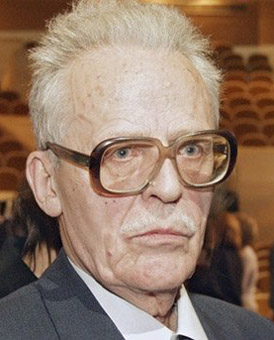
Boris Vasilyev (May 21, 1924 – March 11, 2013), a respected author of several history books and patriotic novels, who was a Soviet officer and veteran of WWII, had this to say about his German enemy:
Daniil Granin (January 1, 1919 - ), a famed Russian author and veteran of WWII, said:
And lastly, the famous Russian writer Viktor Astafyev (May 1, 1924 – November 29, 2001), who was on the Soviet-German front for the entire war, from 1941-1945, had this to say:
[Above: Flag of the Italian Social Republic (1943-1945)]
[Above: Roberto Farinacci (October 16, 1892 - April 28, 1945)].
[Above: PNF poster showing a German and Italian soldier.]
Born into poverty in Isernia, Molise (Isernia is one of two provinces in the region of Molise, Italy), his situation forced him to leave school and head to work on a railroad in Cremona at a young age. After WWI Farinacci became a staunch supporter of the Fascist movement and Benito Mussolini. He became the local leader of the Fascists in Cremona, publishing the newspapers Cremona Nuova and Il Regime Fascista. In 1919 he organized the Blackshirt combat squads of Cremona and in 1922 became the mayor of Cremora.
[Above: Farinacci in military uniform, 1940]
[Above: A beautiful PNF building honoring Farinacci.]
[Above: Farinacci and Adolf Hitler. Wouldn't you love to know what they are talking about!]
Farinacci was in communication with National Socialist Germany at the start of WWII. He was a strong supporter of Italy joining the Axis and was also an advisor to Mussolini on Italy's relations with Germany. In 1943 Germany even considered him for leadership of the Italian Social Republic (the German-backed Italian government in Northern Italy) when Mussolini was unjustly imprisoned. It wasn't meant to be, however, because of Otto Skorzeny's daring rescue of Mussolini.
Farinacci went back to Cremona and stayed active by writing political articles. He spent his life fighting the forces that threatened the very existence of all the nations of Earth. His reward for this tiring struggle was death. Roberto Farinacci was executed by communist partisans on April 28, 1945.
[Above: Painting of Farinacci]
[Above: A modern picture of a woman honoring Farinacci. She stands before his grave and drapes the flag of the Italian Social Republic over it.]
[Above: Stamps of Italy overprinted by Germany for use in Kotor. Circa January 1944.]
[Above: Strip of stamps of Italy overprinted by Germany for use in Kotor. Used on November 10, 1944.]
[Above: Block of four.]
[Above: Exceptionally rare inverted overprint. Only a few are known to exist worldwide.]
[Above: Stamps of Yugoslavia overprinted by Germany for use in Kotor. Circa September 1944.]
[Above: Here is a rare inverted overprint of the above stamp. Click to see other errors.]
[Above: These stamps were made for Kotor in 1944 but were never issued due to the end of the war. They are very rare.]
[Above: Very rare block of four Kotor stamps used on envelope.]
[Above: Overprinted Italian postcard.]
[Above: An old Italian postcard showing a regional map of the area. Zara can be seen on the bottom right.]
Zara was a province of the kingdom of Italy from 1918 until 1947. Under Italian Social Republic administration Zara was carpet bombed mercilessly by the Allies. Civilian areas were targeted and countless civilians were murdered. Many important landmarks and medieval works of art were destroyed.
[Above: The Germans overprinted these Italian stamps on October 9, 1943. Some of these stamps are very rare. Note the inverted overprint on the bottom stamp! Only 51 examples of this stamp are known to exist!]
[Above: The Germans overprinted these Italian stamps on October 9, 1943. Some of these stamps are very rare. Note the inverted overprint stamp in the middle row, second up! Only 120 examples of this stamp are known to exist!]
[Above: Zara Airmail stamps from October 9, 1943.]
[Above: Extremely rare pair of stamps from 1943. Only 71 copies were issued of the 20 Lira light blue green (type I)! The 50 Lira dark violet (type I) is even rarer, only 47 copies issued! These are two of the great rarities of German WWII stamps.]
[Above: Zara stamps on envelopes are exceedingly rare.]
[Above: Zara airmail stamps on envelopes are exceedingly rare. For example, only 200 copies of the orange example on the bottom were printed! Circa 1943.]
[Above: These Italian stamps were the last sets overprinted by the Germans on November 6, 1943.]
[Above: Wehrmacht soldiers and their Italian comrades take a moment to relax on the streets of Split. Circa September-October 1943. Courtesy of the Bundesarchiv.]
[Above: German troops raise the flag over Split.]
[Above: German troops in Split after their victory over the communist terrorists of Tito. The writing on the wall says 'Death to Fascism - Freedom to People'. Yeah, freedom to be a slave.]
[Above: Croatian 1944 local issues for the territory of Split (Spalato). Unlike the regular Split issues, which used Croatian stamps after 1944, these locals, like the German stamps in the categories above, feature the original Italian stamps of the region with an applied overprint. These were never actually issued and are extremely rare. 17 stamps were overprinted, as seen here, for a total of 231 sets. Click on the image to see another set of examples.]
[Above: Take a better look at the overprint here. Click to enlarge.]
[Above: This article on Split is taken from the 'Berliner Illustrierte Zeitung' (number 42, October 21, 1943). Click to enlarge and for translation.]
[Above: Fiume and Kupa Zone 1941 - only 100 sets printed! This ultra rare set was overprinted on Italian stamps.]
In 1941 Susak was occupied by Italy and was renamed together with Rijeka and the Kupa River areas, as Fiume and Kupa Zone.
[Above: This set is overprinted on Yugoslav stamps, and as the blue overprint says it benefits mothers and children in need.]
[Above: Fiume and Kupa Zone official tax stamps overprinted on old Yugoslav stamps.]
[Above: Fiume and Kupa Zone stamps overprinted on Yugoslav stamps. Click to enlarge and see rare inverted overprint versions.]
[Above: Presentation sheet with 14 overprinted stamps, tied by bilingual 'Sussak' May 20, 1941 postmarks. This is an extremely limited edition of 150, this sheet is numbered 85.]
'It is well enough that people of the nation do not understand our banking and monetary system, for if they did, I believe there would be a revolution before tomorrow morning.'
[Above: Henry Ford (July 30, 1863 – April 7, 1947)]
For once in America, the land of unbridled greed, someone was willing to share his wealth with his workers. This unheard of generosity had ripple effects all over the industry and forced other companies to compete with Ford or lose their best workers.
Ford also was one of the few major corporations actively hiring black workers. Furthermore, he also hired women and the handicapped in a time when doing so was very rare.
Ford even went further to improve the lives of his workers. He offered profit sharing to respectable and responsible workers in the company. He encouraged healthy lifestyles void of excessive drinking, gambling and even discouraged 'deadbeat' dads.
He was staunchly against labor unions, which he realized to be corrupt organizations hurting the workers. He was anti-war and very critical of those who financed war. During WWI he and 170 other prominent anti-war activists went to Europe on a 'peace ship' to try to stop the war. Of course, like usual, the warmongers won.
In 1921 Ford proposed a revolutionary idea:
'Ford's Vision:
In 1921, Henry Ford, the automotive pioneer, proposed to purchase the unfinished Wilson Dam and two nitrate plants in Muscle Shoals, Alabama,
The Proposal:
Ford envisioned a city spanning 75 miles, employing a million workers, and centered around the nitrate plants and the hydroelectric power of the dam.
Government's Perspective:
The U.S. government was considering selling the plants and dam to a private company at the time, as they were originally built for wartime nitrate production but were not needed after the war.
Ford's Offer:
Ford offered to buy the nitrate plants and the power from Wilson Dam for $5 million, envisioning the creation of a giant industrial city at Muscle Shoals that ultimately would employ a million workers.
Public Opposition and Rejection:
Ford's proposal faced opposition from those who believed in public ownership and development of the resources for the benefit of the region.
The Tennessee Valley Authority (TVA):
Ford's Dream Dies:
Ford's dream of a "Ford City" in Muscle Shoals never materialized, but the area did become a major industrial center under the TVA,
This caused a massive outcry from the public who rightfully felt the federal government had ruined their futures. It wouldn't be the first time or the last. What the people didn't know was the American government loved war, and had been engaging in it since its inception. Arms manufacturers had powerful lobbies in the government and the government itself had tentacles in its profits.
[Above: Original newspaper article.]
In the early 1920s, Ford did a weekly newspaper called the Dearborn Independent. Famously this newspaper published The Protocols of the Elders of Zion. In February 1921, the New York World did an interview with Ford, where he said: 'The only statement I care to make about the Protocols is that they fit in with what is going on.'
In Germany, Ford's articles exposing Jewry from The Dearborn Independent were published in four volumes, titled The International Jew - the World's Foremost Problem.
In 1924 Heinrich Himmler described Ford as 'one of our most valuable, important, and witty fighters.'
Ford also carries the honored distinction of being the only American mentioned in Mein Kampf. Adolf Hitler wrote: '...only a single great man, Ford, [who], to [the Jews'] fury, still maintains full independence...[from] the controlling masters of the producers in a nation of one hundred and twenty millions.'
In 1931 Adolf Hitler said he regarded Ford as an 'inspiration'. He even kept a portrait of Ford next to his desk!
In July 1938 on Ford's 75th birthday, the German consul in Cleveland gave him the award of the Grand Cross of the German Eagle, which was the highest medal National Socialist Germany could bestow on a foreigner.]
[Above: The beautiful 'Grand Cross of the German Eagle']
[Above & below: Ford receiving the Grand Cross of the German Eagle medal, presented by Karl Kapp, German Consul-general of Cleveland (left), and Fritz Hailer, German Consul of Detroit (right), on his 75th birthday.]
[Above: Henry Ford's signature]
'There is nothing that the International Jew fears so much as the truth, or any hint of the truth about himself or his plans.'
[Above: The German Kuban campaign shield was a military award given to the soldiers who fought to preserve the bridgeheads in the Kuban region from February 1943 until October of that same year.
[Above: Kuban region Waffen-SS volunteer. Check out his cap patch!]
[Above: A corporal in the 4th Kuban Regiment of the 1st Cossack Division.]
[Above: A Kuban volunteer bearing an uncut patch on his sleeve heats some field rations.]
[Above: A Kuban volunteer by Max Spielmann, 1942. 'Freiwilliger der Deutschen Legion' (Volunteer of the German Legion).]
[Above: This article on Split is taken from the 'Berliner Illustrierte Zeitung' (number 20, May 20, 1943). Click to enlarge and for translation.]
[Above: Article on Kuban from the 'Berliner Illustrierte Zeitung' (number 38, September 23, 1943). Click to enlarge and read translation.]
[Above: To the left is the Kuban patch as seen above, to the right is a patch for Kuban Cossacks.]
[Above: Graphic of Chinese and German friendship.]
[The NSDAP Party philosopher, Alfred Rosenberg[
Germany was appalled at how British colonialists had exploited China. Alfred Rosenberg wrote about this in his book Myth of the 20th Century, saying:
'Into this closed Chinese world came a western trading, intruding imperialism in the 19th century.
'It was not in the name of necessary protection that the white race broke into China,
'To forbid immigration to North America and Australia to the Yellow races,
'The attempts of imperialist powers in the last decades to rule the furthermost corners of the world
'Europe and America entered East Asia on the pretext that they had to preserve their trade in China,
[Above: Hitler Youth camp in China (Lager Ostern). Circa 1935. Courtesy of the Bundesarchiv.]
[Above: Members of The League of German Girls (BDM) at a camp in the ancient city of Wuxi (a city near Shanghai in eastern China), in the Republic of China, 1934.]
[Above: Members of The League of German Girls (BDM) and the Hitler Youth (HJ) at a camp in Tientsin, China, 1935. Courtesy of the Bundesarchiv.]
[Above: The Sturmabteilung and Hitler Youth in China. They were invited by the Kuomintang government. Circa 1935. Courtesy of the Bundesarchiv.]
[Above: German identification booklet for Tientsin, China.]
[Above: This picture illustrates Chinese soldiers wearing German style helmets, just one part of the massive German assistance and influence on the Chinese military.]
[Above: Chinese Ambassador H. H. Kung in Berlin.]
[Above: Adolf Hitler pays his respects to the Chinese delegation.]
In the days that followed Kung visited Hermann Göring and again met with Adolf Hitler. Adolf Hitler told Kung the same thing he had told the Japanese; that Germany had no political or territorial demands in the Far East. They talked of business and how the two countries could work together in the future. Adolf Hitler told Kung that he wished that China and Japan could cooperate in the future and that he could even mediate any disputes between the two countries. The two ended their talks with a discussion of the dangers of communism.
[Above: Adolf Hitler and the Chinese delegation at the Berghof, 1937.]
[Above: Adolf Hitler with Chinese Ambassador H. H. Kung at Berchtesgaden.]
[Above: Adolf Hitler with Chinese interpreter at Berchtesgaden.]
[Above: Adolf Hitler with Ambassador H. H. Kung and Chinese interpreter (middle) at Berchtesgaden.]
[Above: Adolf Hitler with Chinese interpreter at Berchtesgaden.]
[Above: Adolf Hitler with Ambassador H. H. Kung at Berchtesgaden.]
Qiu Fazu (December 6, 1914 – June 14, 2008) was a celebrated Chinese surgeon and politician. In fact, he was one of the most acclaimed surgeons in China and a pioneer of Chinese organ transplantation.
He began his journey as a surgeon in seemingly one of the most unlikely places for a Chinese man -- Hitler's Germany. But we know those lies don't stand up to the truth. Fazu initially graduated from the German School of Medicine in Shanghai. In 1936 he won a scholarship and went to study at the Ludwig Maximilian University of Munich. He graduated from the college in November 1939 with honors, receiving his PhD and the license to practice his profession in Germany. Wait, so he could even practice medicine on Germans? Yes indeed, and he stayed in Germany until the end of the war.
In September 1944, at the age of 31, Qiu earned the rank of attending physician and headed the Jodquellenhof in Bad Tölz, which due to the war been turned into a makeshift hospital.
If they lied about this, can you imagine all the other things they lied about?
[Above: Qiu Fazu and his German wife Loni König, whom he married after the war.]
[Above: Qiu Fazu, toward the end of his life.]
[Above: Qiu Fazu and his family.]
[Above: This is a postcard showing the Chinese Tower in Munich. I wonder why those 'Nazi' racists would have a Chinese-themed building? The Chinese Tower was burned down in a vicious white phosphorus attack by the Allies on June 13, 1944. The tower was reconstructed from 1951 to 1952 and today is a big tourist destiniation. The reverse of this says:
'München, der Chinesische Turm im Englischen Garten'.
(Munich, the Chinese Tower in the English Garden)
This is also marked with a cancel celebrating Adolf Hitler's 1939 50th birthday. Click to see more.]
[Above: Here is a newspaper article entitled 'A German Woman's Pilgrimage to China's Holiest Mountain', taken from the German newspaper 'Illustrierte Zeitung', August 5, 1943, number 31.]
[Above: German-Chinese postcard from Shanghai, China, 1939. On the side it says: 'Du sparst viel Aerger, Zeit, Geld, Kraft, Weil "Tempo", was du brauchst, die schafft' (You'll save a lot of hassle, time, money, and energy, because "Tempo" can provide what you need.) It is pre-addressed to 'An die "Tempo" -Wohnungs-Zeitung' (To the "Tempo" housing newspaper). On the reverse it says: 'Teile Ihnen hierdurch mit, dass ich das in Ihrer "Tempo" -Wohnungs-Zeitung
inserierte Zimmer (Wohnung) verietet habe. ' (I hereby inform you that I have rented the room (apartment) advertised in your "Tempo" housing newspaper). I'm guessing this is so they take the ad out of the newspaper. It's interesting that this is in German, this could be for the large German-Jewish inhabitants which came here after 1933.]
At the end of 1941 Germany signed the Tripartite Pact, along with Japan and Italy. In July 1941, Germany officially recognized Wang Jingwei's Japanese-backed government in Nanking, ending all contact and cooperation with Chiang's Chinese government.
After the attack on Pearl Harbor, China formally joined the Allies and declared war on Germany on December 9, 1941.
'Patriotism is Greater than Parties'
[Above: British Fascists badge.]
[Above: 'What is Fascism' flyer.]
[Above: Rotha Lintorn-Orman.]
[Above: British Fascists gather for a photograph. Note the female in the middle -- this could be Rotha Lintorn-Orman.]
[Above: British Fascists march in Hyde Park, London, 1923.]
[Above: A poster from 1927 advertising a lecture sponsored by the British Fascists.]
[Above: An example of the salute of the British Fascists.]
[Above: Swearing in ceremony]
[Above: Mary Sophia Allen, circa 1922.]
At the outbreak of the First World War in 1914, Mary joined the 'Women Police Volunteers' (WPS), led by Margaret Mary Damer Dawson, with herself assuming second-in-command. This new force designed their own uniform and even started training schools in London and Bristol. They cut their hair in a short military style crop and assumed a very masculine appearance.
The WPS saw their role primarily as a force of morality. They rescued women from prostitution and other vices and were a force of good for both mother and child. They even set up a home for needy mothers and their children.
Mary was awarded the Order of the British Empire medal for her work during the war. After the war however, the WPS clashed with the British government, who saw no more use for them and ordered them to disband immediately. But the energized women of the WPS would do no such thing. After spending some time in jail, and assuming command of the WPS after the death of its leader, Mary renamed the WPS to the 'Women's Auxiliary Service' (WAS).
While the group was no longer an official government body, eventually the government began using Mary as a representative abroad. She traveled extensively, and even learned to fly in the coming years. Everywhere she went she was treated by governments as the leading British police woman, even though officially she was not. This began to anger the British government and her travels soon ended.
However during this time she was able to see fascism and National Socialism at work. She was taken by the happiness and prosperity these countries exuded. She soon realized that National Socialism was the answer to the world's amounting problems. She met Adolf Hitler, Benito Mussolini, Eoin O'Duffy and Francisco Franco.
By 1939 she declared herself a fascist. After the outbreak of the Second World War she refused to condemn Adolf Hitler and gave speeches for the British Union of Fascists. This resulted in her being placed on a form of house arrest for the duration of the war.
Of her personal life after the war little is known. But in case you were wondering, yes, she was a lesbian.
[Above: Mary Sophia Allen (right) and Margaret Damer Dawson, World War I era.]
[Above: British Fascists at work in their headquarters.]
[Above: 'The British Lion' newspaper, October-November 1927.]
[Above: 'British Fascism' newspaper, October 1931.]
[Above: The stamps above are a matter of hot debate. No one is really sure if they are authentic WW2 items, or made postwar by some money-grubbing charlatan. There are a number of issues like this which some experts say they are authentic and others claim they are not. The story goes that a small group of German officers commissioned the printing of the overprints of six Yugoslavian stamps for local use on Brac and that they were meant to be charity issues.
[Above: A young Joe Louis primed for battle.]
[Above: On June 19, 1936 Joe Louis and Germany's Max Schmeling squared off at Yankee Stadium in New York. The seats were sold out. It was the first Louis ever hit the canvas in 28 professional fights. After twelve rounds the fight ended with Schmeling the champion. Louis was knocked out by a punch to the jaw and was counted out.]
[Above: Poster for the June 19th match. It says the 18th but it was on the 19th due to it being delayed because of rain.]
On June 22, 1938, exactly one year from the day that Joe Louis won the heavy weight title, Max Schmeling and Louis met again in the ring at Yankee Stadium. It was touted in the American press as a battle between the 'Aryan superman' and Louis. The press turned the fight into a racially charged circus.
This battle would end with Louis being victorious. The press went wild. The 'Nazis' had been beaten by a 'nigger'. While they vilified Schmeling, the American press couldn't resist shamelessly attacking Louis. The Washington Post wrote 'Joe Louis, the lethargic, chicken-eating young colored boy, reverted to his dreaded role of the "brown bomber" tonight.' While the United Press referred to Louis as 'a jungle man, completely primitive as any savage, out to destroy the thing he hates.'
[Above: Schmeling and Louis]
[Above: Max Schmeling (right) and his attendants salute after a fight in Hamburg, Germany, March 10, 1935. Click to see more.]
[Above: Max Schmeling and Adolf Hitler.]
[Above: Schmeling and Louis in 1971.]
[Above: Max Schmeling postal vignette.]
[Above: 2005 postage stamp from Germany honoring Max Schmeling.]
[Above: A boxing-related postal cancel from November 1941 between Germany and Denmark. 'Boxen Länderkampf' (International Boxing Fight).]
[Above: An amateur boxing cancel from March 19, 1939 in Essen.]
[Above: A boxing event in Frankfurt, April 14, 1938.]
[Above: Amateur boxing match in Magdeburg.]
[Above: A boxing event in Stuttgart, March 7-10, 1934.]
[Above: A young Nejiko Suwa.]
[Above: Nejiko Suwa being presented the legendary violin by Joseph Goebbels.]
[Above: Nejiko Suwa and National Socialist officers reviewing photographs.]
[Above: Nejiko Suwa.]
[Above: Nejiko Suwa.]
[Above: Salvatore Caridi.]
[Above: Salvatore Caridi and Fritz Kuhn, leader of the German-American Bund, at Camp Nordland, New Jersey.]
[Above: Italian American war veteran Black Shirts, at Camp Nordland, New Jersey.]
[Above: Italian Black Shirts at Camp Siegfried, New York.]
[Above: Italian fascists (white shirts) stand side-by-side with Bund color guards.]
[Above: Two females of the Blackshirts.]
'We are strictly an American organization, with no connections with Germany... We are the only movement which fights Communism successfully, and for that reason alone we are being attacked... The aim of the German-American Bund is to unite all Germans and Americans in our country to a united front against Communism. We do show the Nazi emblem alongside of the American flag, with the biggest respect for Hitler and his movement in Germany, fighting the world's madness, Communism.'
Fritz Kuhn was a very effective leader. The Bund had untold thousands of American members and even more supporters. How many we'll never know because he cleverly destroyed the Bund's membership lists to protect its members.
On February 20, 1939, Kuhn held the largest and highly publicized rally in the Bund's history. It was held at Madison Square Garden in New York City. Tens of thousands attended to hear Kuhn speak.
[Above: Newspaper article regarding the event.]
His popularity made him a top enemy of the dark powers-that-be. Like anyone they wish to destroy but have no evidence of criminal activity, they attacked him on trumped up tax violations.
On December 5, 1939, Kuhn was sentenced to two and a half to five years in prison for 'tax evasion and embezzlement'.
While in the dungeons of 'democracy', Kuhn's citizenship was stripped on June 1, 1943. He spent 43 long months in the state prison before being released only to be re-arrested on June 21, 1943 as an 'enemy agent' and interned by the federal government at a concentration camp in Crystal City, Texas.
But the enemy wasn't done. After the War, in September 1945, Kuhn was sent to Ellis Island and deported to Germany. On arriving in West Germany, he was imprisoned yet again! He was eventually released on April 25, 1946, although the tyrants would continue to arrest and attack him until his death.
The New York Times proudly proclaimed that he died 'a poor and obscure chemist, unheralded and unsung.'
How wrong they were.
Fritz Kuhn's great deeds live on. What was the name of the forgotten New York Times writer?
[Above: Fritz Kuhn (far right) meeting Adolf Hitler on July 26, 1936, at the Reich Chancellery in Berlin.]
[Above: Another picture from the above. Fritz Kuhn was personally invited by Adolf Hitler.]
[Above: Fritz Kuhn at one of many speaking engagements in the USA.]
[Above: Fritz Kuhn with his comrades.]
[Above: A Bund parade through the streets of New York. Vonsiatsky, the Russian-American National Socialist leader, is on the far left, beside him is Fritz Kuhn.]
[Above: Fritz's wife Elsa Kuhn, ready to defend her husband, at the show trial of her husband at the General Sessions court in New York City, Nov. 20, 1939.]
[Above: Kuhn, classified as a 'German undesirable', Fritz was finally released on April 25, 1946, from Asperg Interment Number 76.
Page One
-|-
Page Two
-|-
Page Three
-|-
Page Four
-|-
Page Six
Page Seven
-|- Page Eight
-|- Page Nine-|-
Page Ten
-|- Page Eleven
Page Twelve
-|-
Page Thirteen
-|- Page Fourteen
-|- Page Fifteen
Page Sixteen
-|- Page Seventeen
-|- Page Eighteen
-|- Page Nineteen
Page Twenty
-|- Page Twenty-One
-|- Page Twenty-two
-|-
Third Reich Photographs
-|-
'The Nazi Germans waged war perfectly. Even when they were encircled, they fought excellently! I know it. I saw it by myself!'
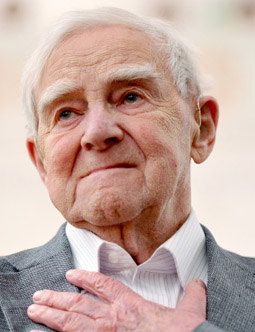
'The Germans fought better, much better than our soldiers. Moreover - we've managed to win that war only by human flesh!'
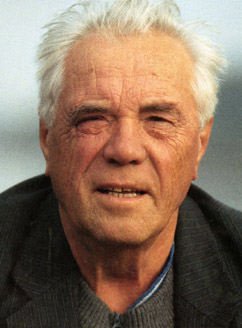
'The Germans fought much, much better — in all respects! The Communists chose to shed rivers of Russian blood literally in order to win the war. The Soviets won over Germany only by their extreme brutality and inhumanity!'
Astafyev also said this about the alleged great Russian General Georgy Zhukov:
'Honest Russian patriot? Ha! This bastard covered half-Europe [with] millions of Russian corpses by his extremely sadistic personal kind of war waging! He deserves neither honor, nor respect, never!'


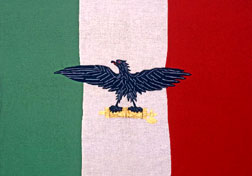

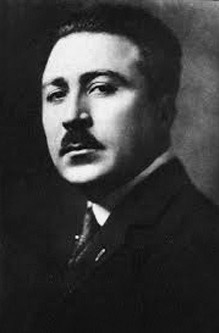
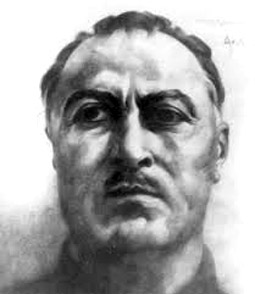

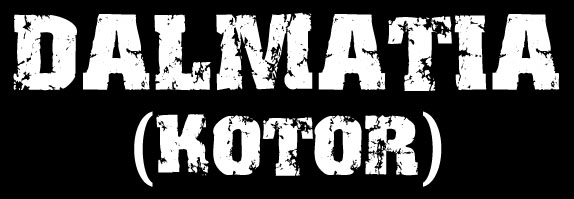
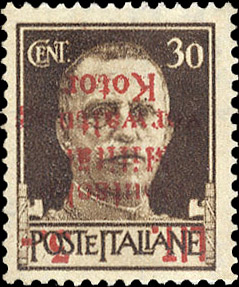

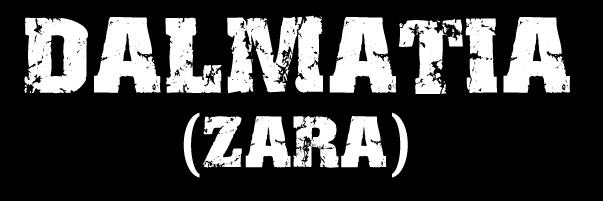
The Germans rushed to save what Italian ground they could and sent commando-extraordinaire Otto Skorzeny to rescue Mussolini. It proved to be one of the greatest operations of WW2 and was a shattering success. Mussolini was free.
Many Italian civilians and soldiers remained loyal to Mussolini. With the assistance of his allies, Mussolini set up The Italian Social Republic in the North of Italy.
Troops of the Italian Social Republic with German support quickly seized Dalmatia. Additionally the Germans entered and secured Zara, also known as Zadar.
By late October 1944 the Italian administration and German army was forced to evacuate the city.

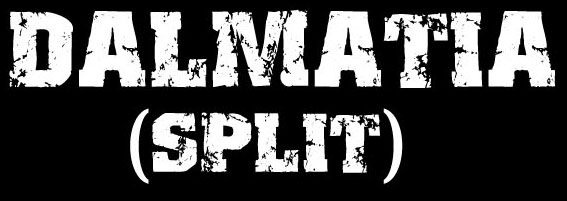
In September of 1943, after the capitulation of Italy, the city was temporarily controlled by Tito's communist terrorists. However, they couldn't hold the city. A few weeks later German troops forced them to retreat and placed the city under the authority of Croatia (which it is a part of today).
Like other parts of Dalmatia, the Allies inhumanly carpet bombed the city, causing hundreds of deaths.
The communist terror squads of Tito captured the city on October 26, 1944. But the Germans had one last present for the Allies and their communist friends: In February 1945 the Kriegsmarine conducted a bold raid on Split harbor, badly damaging the British cruiser 'Delhi'.



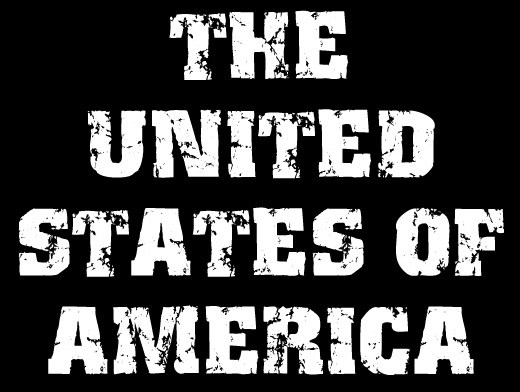


-Henry Ford, 1922
with the goal of turning the area into a major industrial hub.
He proposed to buy the plants and dam for $5 million, a price that was considered low by some, including Senator George Norris of Nebraska.
However, there was also a strong push for public ownership and development of the resources for the benefit of the region.
Congress eventually rejected Ford's offer, and the project languished until the Great Depression.
and is now a renowned music recording location.'
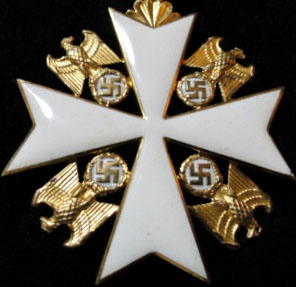
-Henry Ford, The International Jew, Vol. 1, pg. 200


Below the word KUBAN is a stylized map of the Kuban region, with a line representing the defensive line that the men fought to preserve.
It bears the names of the bridgeheads - KRYMSKAJA, LAGUNEN, and NOWORO-SSIJSK.]
When the Germans reached Kuban in 1942 the people greeted them enthusiastically as liberators.
Even the Kuban Cossacks who had previously been forced to fight the Germans quickly allied themselves with the Germans.
The Cossack people proved to be courageous and loyal comrades to the Germans and the Axis. Handfuls of Cossack divisions were formed, which fought in many locales during WW2, including Yugoslavia against Tito's communist terrorists and even into Italy.
After the war most of these brave men were murdered by the communist Russians after being handed over by the British and Americans.
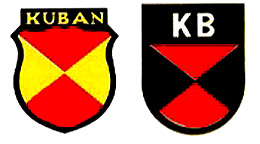


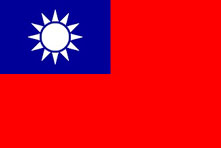
It was linked with missionary activity, which was as energetic as it was unjustified.
Calico and opium, waste products of Europe, infiltrated into China.
These things destroyed first of all the equilibrium of Chinese life in the harbor cities.
Later they penetrated deeper into the land. Overawed at the western technical greatness,
even the cultured Chinese decorated their dwellings with the stale trash of the great warehouses of the European west.'
[Pg. 144, Ch. 6]
but in the service of profit seeking by Jewish traders.
As a result the white race has dishonored itself.
It has disintegrated an entire culture and precipitated a just rebellion against itself.
China fights for its Myth, for its race and its ideals.
This is just what the great renewal movement in Germany seeks to do in its war against the trader race,
which controls all the stock exchanges today and determines the actions of almost all those who govern.'
[Pg. 145, Ch 6.]
but at the same time to wish to colonize or rule the Far East,
is a Capitalist insanity, which begins to avenge itself today in the smoldering revolts in China.'
[Pg. 149, Ch 6.]
with cannons and to keep the exploited peoples in order were not signs of strength but a proof of weakness,
in the same way that a disproportionately large police force in a state does not show a strong structure, but rottenness instead.'
[Pg. 149, Ch. 6]
thereby saving hundreds of thousands, indeed millions, of jobs at home from collapse.
That view is untenable; the only valid conclusion is that they did this with contemporary imperialism's lust for robbery.'
[Pg. 149, Ch. 6]




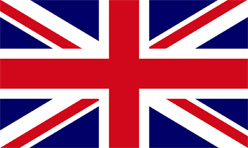
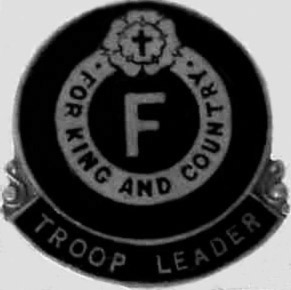

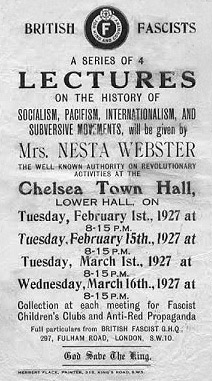
In 1934 the group went bankrupt amidst internal problems. Its leader, Rotha Lintorn-Orman, died the following year.



In 1941 Italy occupied the island of Brac.
When Italy surrendered to the Allies in 1943 it was up to her partner Germany to secure the Italian territories. Germany launched Operation Morgenwind in an effort to recapture the Dalmatian Islands, which included Brac.
The 118th Jager Division arrived on Brac island ready to drive out any terrorist-communist forces, but found the island abandoned.
Germany fought an ongoing battle against 'partisan' forces in the summer of 1944, when finally the island was abandoned by German forces.
It is further said that these officers had no authority for the printing and that the stamps were never authorized by the Wehrmacht Feldpostmeister.
Lastly, the story goes that only 400-500 of each stamp was printed and that only 50 sets survived WW2. Who knows?]




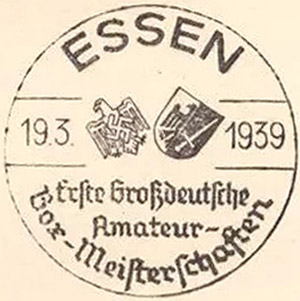


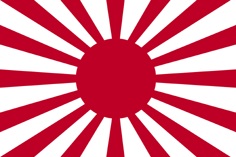

She is most noted today for having been presented a Stradivarius by propaganda minister Joseph Goebbels.
In 1936 Suwa moved to Brussels to study, and thereafter to Paris in 1938. She had her European debut in the Salle de Chopin on May 15, 1939.
During WW2 she continued to stay in Paris furthering her studies.
Suwa gave concerts to wounded German troops during this time.
In recognition for her services to the troops and her 'superb technique and a brilliant display of art' on the violin Goebbels presented her with a Stradivarius on February 22, 1943.
Suwa was a featured soloist in a brilliant concert given by the Berlin Philharmonic in October 1943.
She continued to perform to much acclaim in various German cities thereafter.




At a meeting on July 18, 1937, at the site of the German-American Bund's camp near Andover, New Jersey, approximately 500 uniformed Black Shirts marched with a delegation of Italian War Veterans. Dr. Salvatore Caridi gave a speech to his men and his National Socialist comrades, and left a warm message to their enemies: '...if they insult Mussolini or Hitler we can punch them in the nose'!
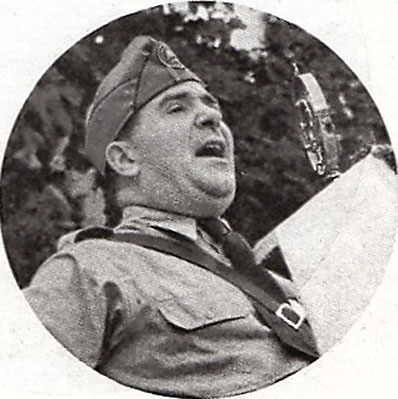




-Fritz Kuhn
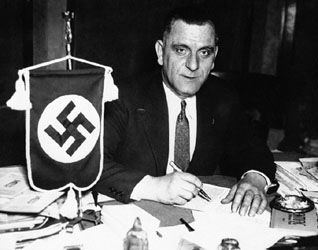
Who knows... and who cares? No one!
Here Fritz and his family meet for the first time in 6 years in Munich, Germany.
From left to right: his son Walter, 19, Mrs. Kuhn, Fritz Kuhn, and Waltraut Kuhn, 22.]


-|-
Third Reich Philatelia
-|-
-|-
Third Reich Ephemera
-|-
-|-
Third Reich Awards
-|-
-|-
Third Reich Miscellanea
-|-
-|-
Third Reich Identification Books
-|-
-|-
Third Reich Currency
-|-
-|-
The Great War
-|-
-|-
Hand of Pandora
-|-
-|-
Waffen-SS Technical Information -|-
-|-
The European Volunteer Movement in WWII -|-
-|-
Copyright -|-